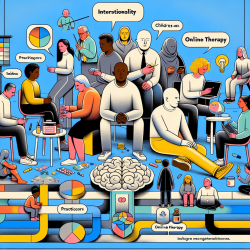Introduction
Suicidal ideation among youth is a pressing concern worldwide, and understanding the underlying factors is crucial for effective intervention. A recent study titled "Various Types of Negative Life Events Among Youth Predict Suicidal Ideation: A Cross-Sectional Study Based on Gender Perspective" sheds light on how different negative life events impact suicidal thoughts in young males and females. This blog aims to provide practitioners with insights from the study to enhance their skills and encourage further research.
Key Findings
The study, conducted with 2,018 high school and university students from northwestern China, revealed significant gender differences in the types of negative life events that predict suicidal ideation. For males, punishment and adaptation were the primary predictors, whereas for females, academic stress, personal loss, interpersonal relationships, and adaptation were significant factors.
Implications for Practitioners
Understanding these gender-specific predictors is vital for practitioners working with adolescents. Here are some practical applications:
- Tailored Interventions: Design interventions that address specific stressors for each gender. For instance, focus on coping strategies for punishment and adaptation for males, and on managing academic stress and interpersonal relationships for females.
- Parental Involvement: Engage parents in the therapeutic process, especially in cases where marital status might be impacting the child’s mental health.
- Early Identification: Use gender-specific markers to identify at-risk youth early. This proactive approach can prevent the escalation of suicidal ideation into attempts.
Encouraging Further Research
While this study provides valuable insights, it also highlights the need for further research. Practitioners are encouraged to explore:
- The impact of cultural factors on the relationship between negative life events and suicidal ideation.
- Longitudinal studies to track changes in suicidal ideation over time and the effectiveness of interventions.
- The role of digital platforms in providing support and therapy to at-risk youth.
Conclusion
Gender differences in the predictors of suicidal ideation among youth underscore the need for tailored interventions. By integrating the findings of this study into practice, therapists can better support adolescents facing these challenges. For more detailed insights, practitioners are encouraged to read the original research paper.
To read the original research paper, please follow this link: Various Types of Negative Life Events Among Youth Predict Suicidal Ideation: A Cross-Sectional Study Based on Gender Perspective.










